Lot of trout in the river, and none on the hook. But place is beautiful.
The river is world-renowned for its fly fishing. It is home to Columbia River redband trout (Oncorhynchus mykiss gairdneri) known locally as “redsides”. The redsides grow larger than most and also have a distinct darker red stripe than most wild rainbow trout. They are abundant in this stretch of the river, which has counts of 1,700 fish of 7 inches in size per mile (1,100 fish of 18 centimeters in size per kilometer) above Sherars Falls, and they are noticeably stronger than trout who do not have to cope with life in such a big, powerful river. The average catch for these fish is 8 to 15 inches (20 to 38 cm), and some are much larger. These redside or redband trouts are found throughout the river. Fishing for them is most popular from Warm Springs down to Macks Canyon (Warm Springs Reservation owns the entire Deschutes west bank from 16 miles (26 km) south of Maupin to Lake Billy Chinook and on up to Jefferson Creek on the Metolius River arm) below Pelton Dam. Fishing from Tribal lands requires special permits. From Pelton Dam to the mouth the Deschutes is one of America’s most productive trout waters and a top producer of summer steelhead, managed primarily for wild trout. This 100-mile (160 km) stretch of river drops 1,233 feet (376 m), carving a volcanic rock canyon 700 to 2,200 feet (213 to 671 m) deep.
The Deschutes in winter at its confluence with the Columbia
Fly fishermen come from around the world in the last two weeks in May through the first two weeks in June to take advantage of the hatching stoneflies, both salmonflies and golden stoneflies (Hesperoperla pacifica). These insects are in the river year-round; however their large adults are a major food source for the fish: artificial weighted stonefly nymph patterned tied flies are a staple for Deschutes anglers year round.
Sport fishing for Steelhead occurs in the river from the mouth to Round Butte Dam. Sport fishing for spring and fall chinook salmon occurs from the mouth to Sherars Falls. Tribal fishing for chinook and steelhead occurs at Sherars Falls.
Crane Prairie Reservoir, the first major lake/reservoir the Deschutes flows into, offers some of the best rainbow trout fishing in Oregon, with a large number of rainbows in the 4-10 pound range and some reaching 20 pounds. These trout are renowned for their size and are given the nickname “cranebows”. Other fish found in Crane Prairie are brook trout, kokanee salmon, largemouth bass, black crappie, tui chub, three-spined stickleback, and whitefish. Fly, lure, and bait fishing are popular methods, with the majority of trout fisherman casting or trolling in the channels. For the best chance of catching large fish, a boat or other flotation device is recommended as the channels can be wide and deep.
Located roughly seven miles southeast of Crane Prairie Reservoir, you will find Wickiup Reservoir. Wickiup Reservoir holds a wide variety of species open to angling. Wickiup holds a reputable amount of both Kokanee and Coho Salmon. It is not uncommon to catch rainbow trout, brooke trout, whitefish and chub. However, most anglers whether they know it or not, are targeting large brown trout. Wickiup Reservoir holds many brown trout in the five to eight pound range, and has also been known to produce brown trout in the mid-twenty pound range. This reservoir is most easily fished from a boat due to its depth. Most people find success in trolling lures horizontally through the depths of the Reservoir. Vertical jigging in an aggressive manner can be an effective method of targeting the salmon species of the reservoir. Bank fishing offers dry fly-fishing enthusiasts an opportunity to catch fish hiding under the obstructions of the shallows.
In Lake Billy Chinook, there are fisheries for kokanee, bull trout, rainbow trout, brown trout, and several warm-water species such as large mouth bass and a very large population of small mouth bass. There are also periodic commercial fisheries for crayfish. The bull trout that are caught in this reservoir are some of the largest bull trout caught on the west coast. The numbers are scarce because the bulls are threatened; however, numbers have risen every year since they became protected. The lake allows an individual to keep a bull trout that measures more than 24 inches (61 cm). (This is included for a daily bag limit.)
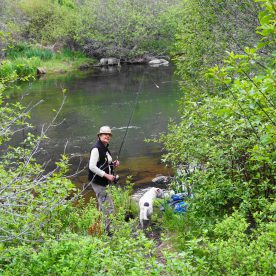
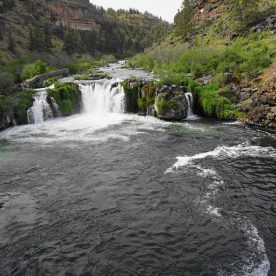
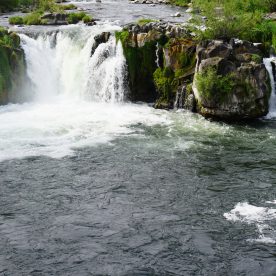
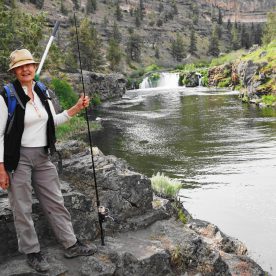
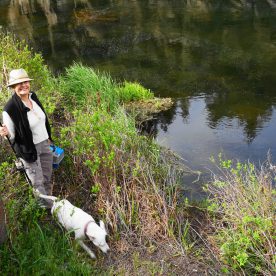
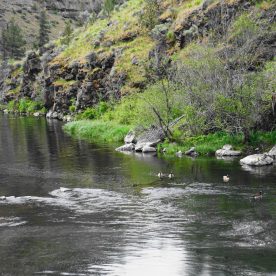

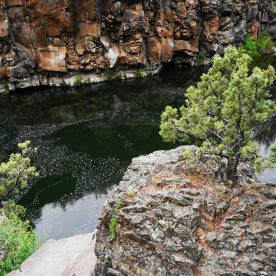
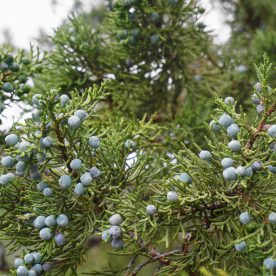
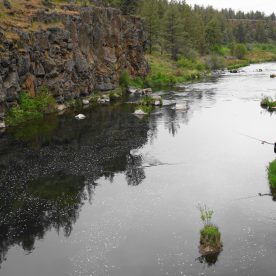
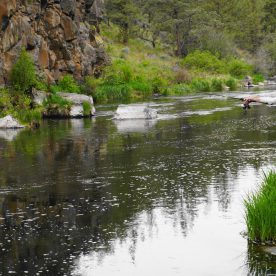
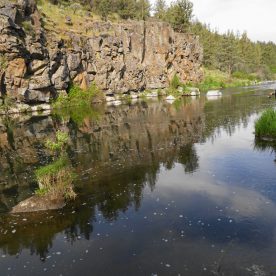
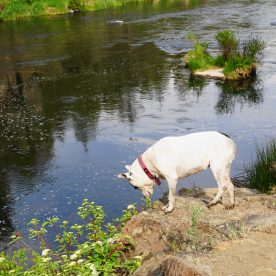
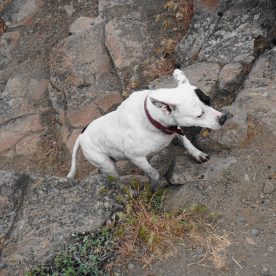
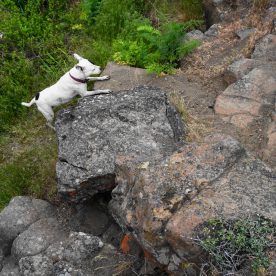
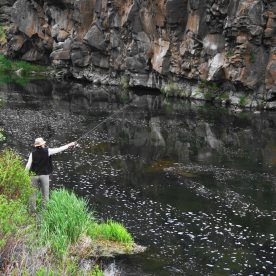
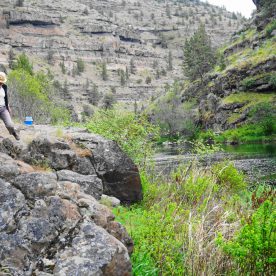
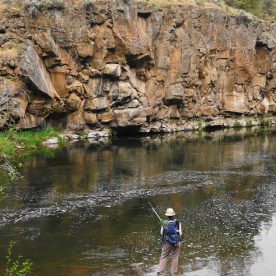
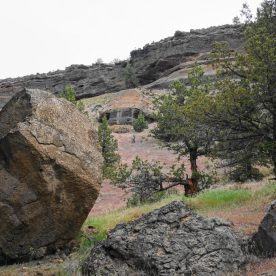
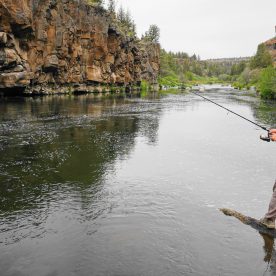
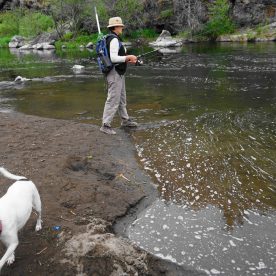
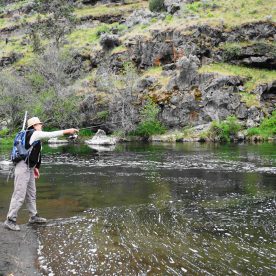
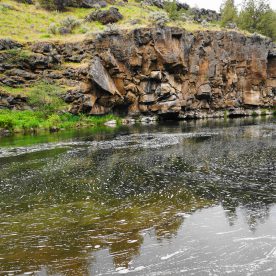
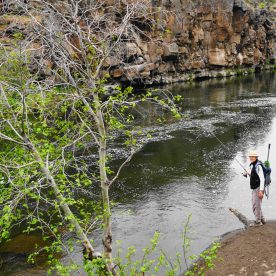
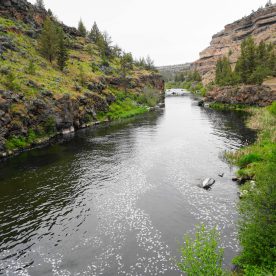
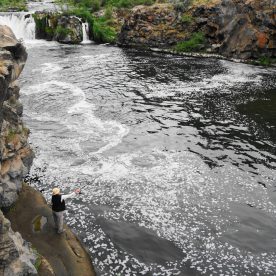
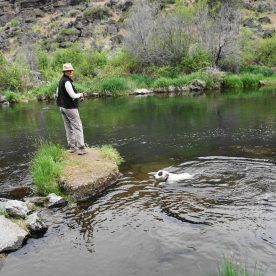
Dixi красавица!
Рыба где?